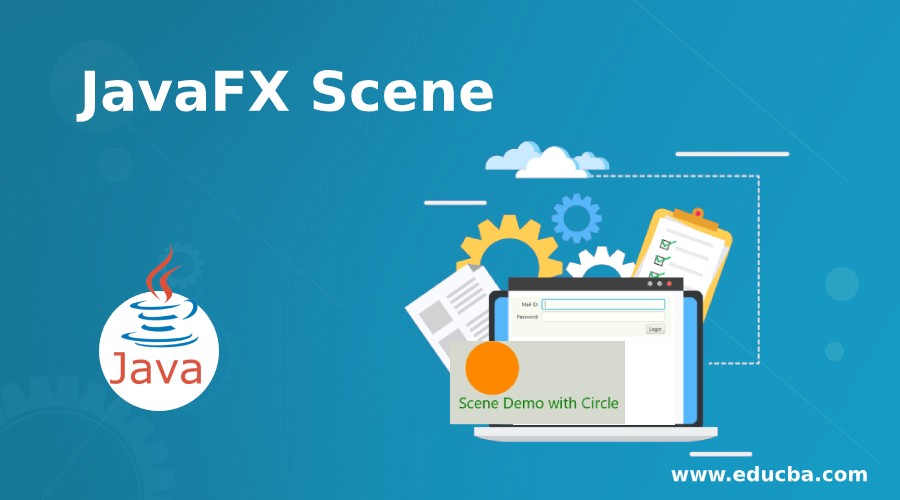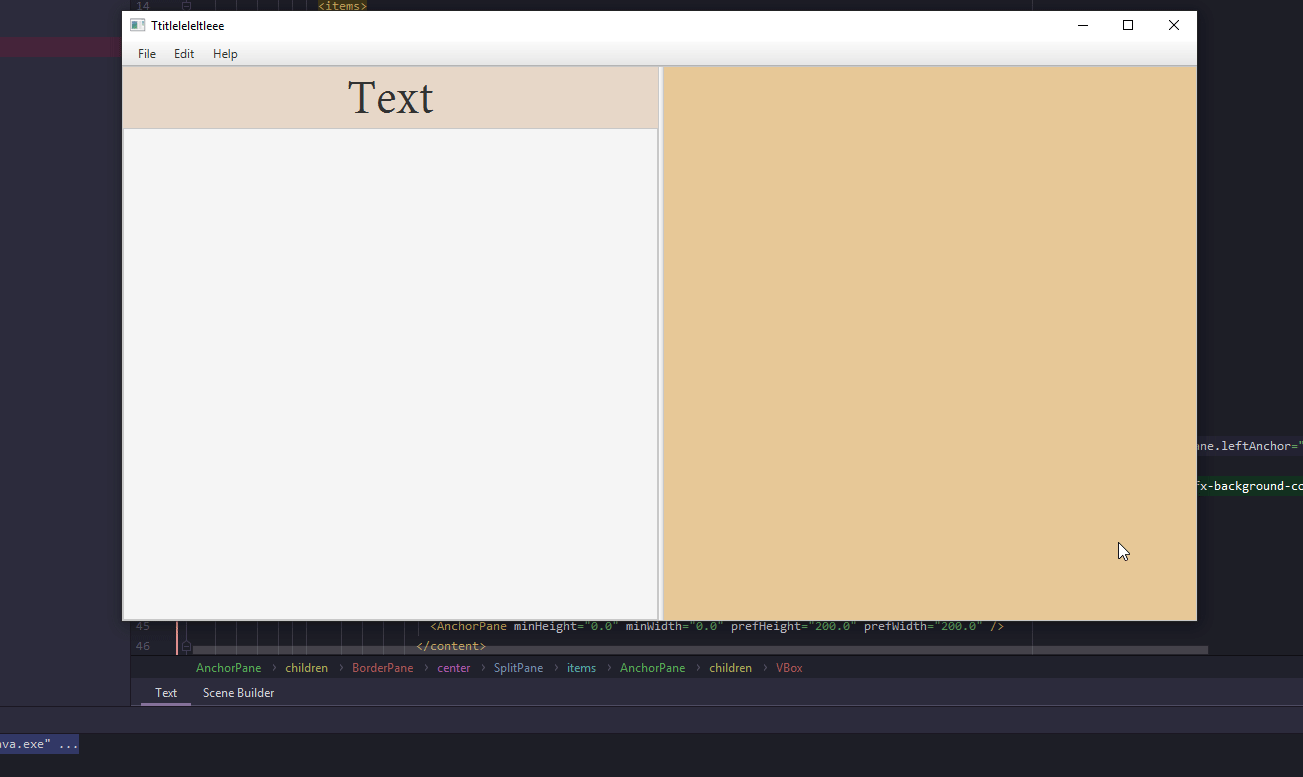

- Javafx scene with a plain text editor example full#
- Javafx scene with a plain text editor example code#
- Javafx scene with a plain text editor example license#
It has a dual licensing, GP元 or a dual license that you can purchase and use it in a non-GP元 app. There isn't that much to say about a map library, Gluon Maps provides a nice looking map controller. Currently, you can find widgets like the bread-crumb-bar, different button bars, decorators for the input fields for CSS, fonts and so on. You can think of ControlsFX as a playground or an incubator for the widgets that will be eventually integrated into the JavaFX.

If a component is not that mature yet it can temporarily reside in JFXtras-labs library, but after some time and exposure it will be promoted to the main one.

You can get calendar widgets, different sorts of date and time picker widgets, menus that pop up on click, and so on. JFXtras is an open source library of components that a Java developer would like to have at their disposal, but which are missing from the JavaFX library. If you need to display complicatedly formatted text or have a custom syntax highlight, RichTextFX is the library to check out.

Javafx scene with a plain text editor example code#
It is intended as a base for rich-text editors and code editors with syntax highlighting. RichTextFX provides a text area for JavaFX with API to style ranges of text. Look no more you can look into the JideFX, and get tooltips, animations, search widgets, all kinds of text controls. If you come from Swing, you might remember Jide - a framework for widgets like a formatted text field, or numeric text fields, together with the validation, and so on. The shapes in the default JavaFX library are limited, and this is a very useful extension library. If you need to use custom shapes in your application, like maybe a star or a donut, or arrows, you can use JSilhouette. TilesFX offers you a set of tile widgets for all kinds of purposes, alarms, weather, data presentation so that you can create super fun dashboards. TilesFX is another widget library by Gerrit, who is an amazing developer by the way. It has beautiful widgets for reporting metrics, available under the Apache 2.0 License and if you're doing any reporting, you should check it out. The main focus of this project is to provide Gauges that can be configured in multiple ways. Medusa is a JavaFX library for Gauges by Gerrit Grunwald. You can whip up a pretty UI that is reasonable about aligning your elements into rows and columns automatically in no time. User interfaces created with MigLayout are easy to maintain, you most likely will understand how the layout will look like just by looking at the source code. MigLayout is a layout engine is written in pure Java, which values simplicity, power and automatic per platform fidelity.
Javafx scene with a plain text editor example full#
Disclaimer, this is not the full list of the libraries in the JavaFX ecosystem! But it's a great place to start if you're new to JavaFX, or if you have some experience with it and want to get better. So we'll follow that path and cover the JavaFX libraries that Andres gave a shout out to. And it was organized by topic: layout, testing, icons, and so on. The session focused on the open source JavaFX libraries that offer something that you often need in a project. But which libraries should developers use for layout, widgets, appearance, and testing? In this article, we look at the JavaFX libraries from Andres Almiray's Virtual JUG session: The JavaFX Ecosystem. The following command can be used to extract the style sheet from the JAR file.JavaFX is better when you use the right libraries. This file is located at the path /jre/lib under the JDK installation directory. This style sheet defines the default style rules for the root node and UI controls. It is found in JavaFX Run time JAR file, jfxrt.jar. JavaFX uses caspian.css as the default CSS file. In this part of the tutorial, we will discuss styling rules and the steps to invoke them in JavaFX. JavaFX provides the package javafx.css which contains all the classes to apply the CSS to the JavaFX application.Īpplying CSS to the JavaFX application is similar to applying CSS to the HTML page. JavaFX, being the new generation UI library, provides the facility to configure the theme of the application. We can also configure the background of the application, layout, design and variety of display for the different size devises. Using CSS, we can define the color, size, font styles, spacing between the paragraph, alignment and many more thing for a web page so that it can look more precise and better. It only deals with the way, a web page is presented on the web browser. CSS (Cascading Style Sheets) is a design language which is used to enhance the appearance of the web pages without changing its functionality.


 0 kommentar(er)
0 kommentar(er)
